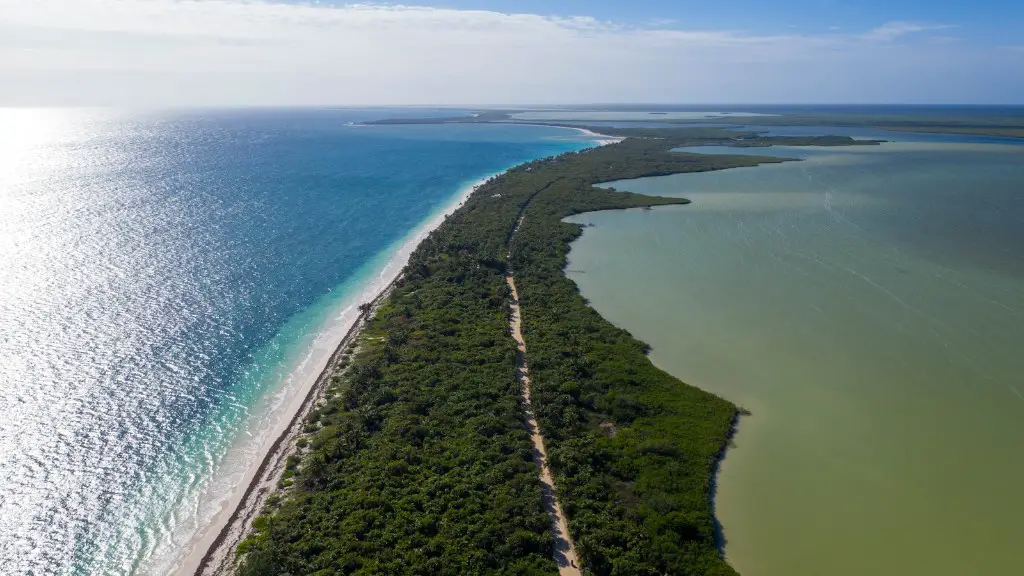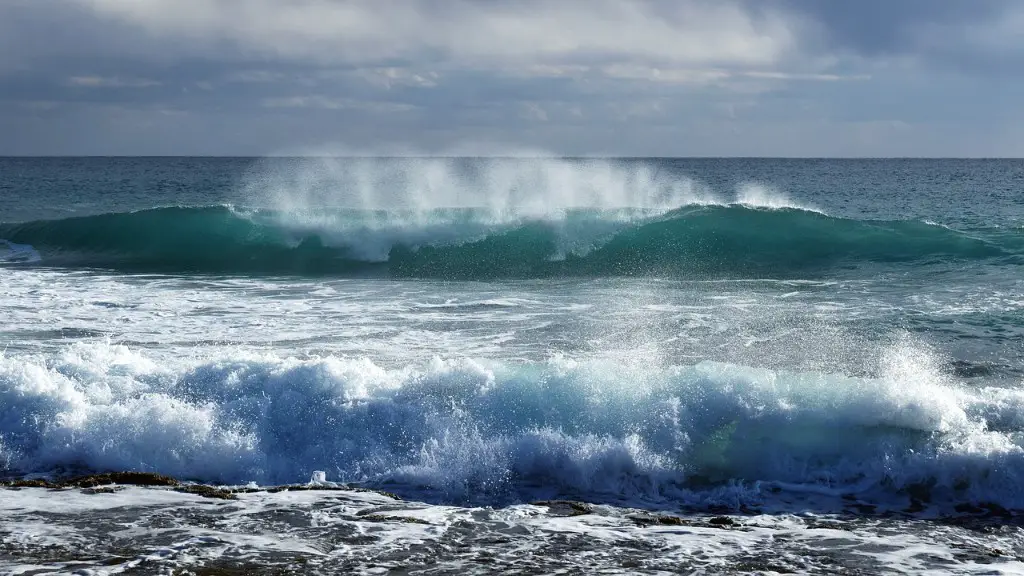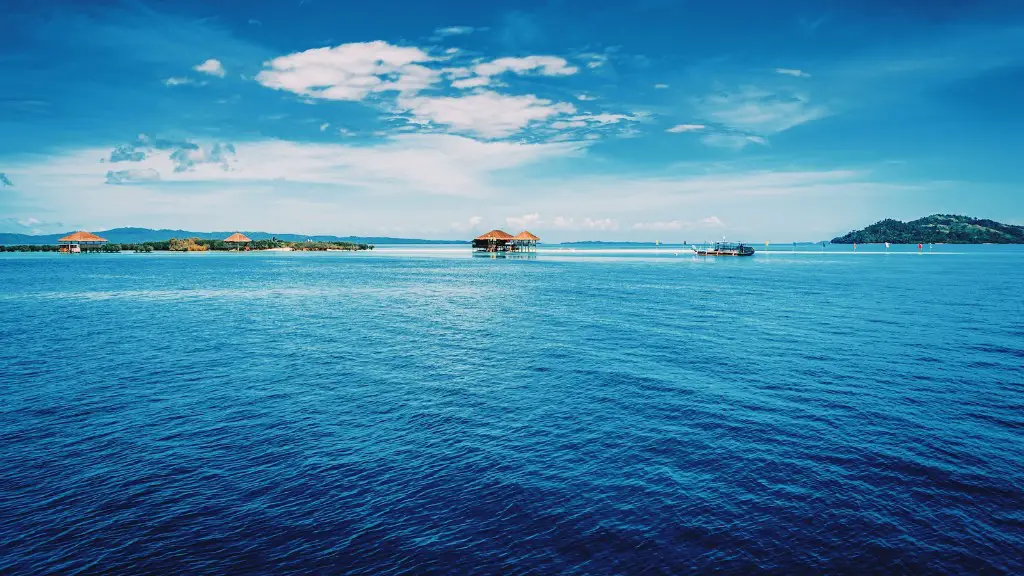Background Information
The South China Sea is a semi-enclosed sea in the western Pacific. It lies between the nations of the Philippines, Vietnam, Malaysia, and Brunei, with China and Taiwan claiming a large portion of the sea. The area is of particular political, economic, and environmental significance, due to the strategic location, rich marine resources, and large areas of biodiversity.
The geopolitical importance of the South China Sea has grown in recent years, as it is home to some of the world’s most lucrative fishing grounds, as well as potentially vast oil and gas reserves. It is also increasingly seen as an area of geopolitical competition, as China and other nations lay claim to various parts of the sea.
Relevant Data
The total area of the South China Sea is about 3,500,000 km2, and it covers a total of roughly 4,000 islands, reefs, and sandbanks. The sea is estimated to have at least 11 billion barrels of oil (around the approximate size of Iraq’s proven reserves) and 190 trillion cubic feet of natural gas in the region.
The Scarborough Shoal and Spratly Islands are two of the most controversial areas of the South China Sea, being subject to overlapping claims from a number of states. These two areas alone are estimated to hold a combined 11 billion barrels of oil.
Expert Perspectives
International experts hold mixed views on the South China Sea. Some feel that it is increasingly becoming an arena for geopolitical competition, with China regularly engaging in activities that impede the free navigation of vessels from other states.
In addition, the activities of Chinese vessels are often seen as provocative and aggressive, raising concerns of a military conflict over the region. Others argue that tensions in the region have been fuelled by outside actors such as the US, and that the dispute should be handled through diplomatic channels.
The United Nations Convention on the Law of the Sea (UNCLOS) has been cited as a possible solution to the dispute. This convention sets out the legal framework for the resolution of disputes and the peaceful settlement of conflicts, and could be used to reach an amicable solution to the situation in the South China Sea.
Analyzing the Situation
It is clear that the South China Sea is a crucial area for both trade and geopolitics, and that the situation between the various countries involved is both highly complex and increasingly tense. In such a delicate situation, it is important that all parties involved work together to find a peaceful solution that respects the sovereignty of all nations and the interests of their citizens.
The US is often seen as the main actor in this dispute, and the US Navy has recently been deploying warships to the South China Sea as a form of deterrence. However, it is also important to note that the US’s presence in the region is also driven by economic interests, as the sea is a vital transit route for Chinese goods and resources.
In addition, the US has been encouraging other countries to challenge China’s growing influence in the region. This has further intensified tensions between China and other nations, especially the Philippines and Vietnam, who are actively contesting China’s claims to the sea.
Economic Impacts
The South China Sea is a major source of economic activity, accounting for around 30% of the world’s maritime trade and an estimated 11 billion barrels of oil. This makes the sea an attractive area for all of the nations involved, who are keen to benefit from the vast resources it possesses.
In addition, the South China Sea is an important fishing ground, with an estimated 6.7 million tonnes of catch being landed annually. This makes the sea an important source of food for many countries in the region, particularly Vietnam and the Philippines.
The contentious disputes over the South China Sea have already had an economic impact, with some countries banning imports of goods from their rivals and companies avoiding investing in the region due to the uncertain legal situation.
The situation also has the potential to have a much broader economic impact, as any conflict could disrupt the vital access to shipping lanes and economic resources across the region. This could have a devastating effect on the economies of not just the countries directly involved, but also countries further afield.
International Reactions
International reactions to the situation in the South China Sea have been mixed, with many countries calling for a peaceful resolution to the dispute. Many have advocated the use of the United Nations Convention on the Law of the Sea, which sets out guidelines for the peaceful resolution of disputes over maritime territory.
The international community also appears united in its condemnation of China’s provocative actions in the region, and many countries have spoken out against Beijing’s refusal to accept international calls for restraint and dialogue.
In addition, several countries, including the US and Japan, have expressed their concern over China’s increasing militarization of the area, and have voiced their support for freedom of navigation and the territorial claims of other countries in the region.
Environmental Impacts
The South China Sea is also of great environmental importance, with a large variety of marine species living in the area. The sea is home to a wide range of habitats, including tropical reefs, seagrass beds, and mangrove forests.
The waters of the South China Sea are also important for the survival of many endangered species, such as the Irrawaddy Dolphin and the Chinese White Dolphin. These animals are sensitive to noise and disruption from human activity, and are at risk of being harmed if their habitats are disturbed.
In addition, the conflict has the potential to significantly damage the marine ecosystems of the South China Sea, as the unregulated exploitation of resources, naval exercises, and environmental footprint of military activities have the potential to wreak havoc on the delicate marine life.
Conclusion
The South China Sea is of immense importance both economically and geopolitically, and the ongoing tensions between the various states involved have only increased in recent years. The conflict is also having an environmental impact, with the delicate marine ecology being put at risk of harm from human activities. It is therefore essential that all parties involved find a peaceful and sustainable solution to the dispute in order to ensure the safety of the region and its people.





